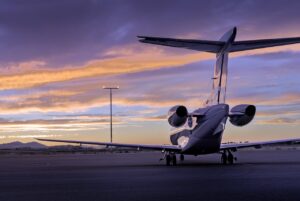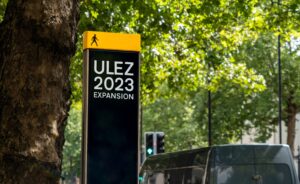A team from Linnaeus University in Sweden have published the results of detailed research into private aviation and concluded that it’s going the wrong way, very quickly.
They examined flight tracker data of 18,655,789 flights, flown by 25,993 private aircraft between 2019 and 2023, which they claim represents the vast majority of private aviation.

They calculated that in 2023, the CO2 emissions from private aviation produced approximately 15.6 million tonnes (an average of around 3.6 tonnes per flight) which is a 46% increase compared to 2019, and equivalent to approximately 1.8% of the total emissions produced by commercial aviation in 2023.
In the same four year period, the number of private aircraft grew by 28.4% and the distances flown by 53.5%.
The team identified 72 models of aircraft which were specifically marketed as being for business use. The fuel consumption among these aircraft varied enormously with the Lockheed L-1319 Jetstar being the worst offender, rattling through 576 gallons of fuel per hour. This would mean the plane is emitting as much CO2 in one hour as the average human is responsible for in a year.
They also found that:
- 47.4% of all flights are for distances below 500 km,
- 4.7% of all flights are for distances below 50 km
The USA is home to 18,163 private aircraft. For perspective, the second highest number is Brazil’s 927.
In the USA there are 5.45 private aircraft per 100,000 residents but, curiously, this is only the second highest figure and it’s a long way behind Malta’s figure of 46.51 per 100,000 residents.
The authors note that major international events are associated with a particularly large volume of private flights.
- FIFA World Cup (2022): 1,846 private flights, producing 14,700 tonnes of CO2.
- COP 28: 644 private flights, producing 4,800 tonnes of CO2.
- Superbowl (2023): 200 private flights, producing 1,500 tonnes of CO2.
Data also reveal that private aircraft serve the same events.
- 172 of the 595 aircraft at the World Economic Forum in Davos also served the Cannes Film Festival
- 96 of the 404 aircraft at COP28, also appeared at the FIFA World Cup.
- 65 identical tail numbers were identified at both the WEF and COP28.
The researchers acknowledge that it is not possible to say whether this indicates it is the same individuals, as aircraft are often chartered, but they suggest that: ‘It would be of interest to further investigate travel motivations across political, economic, and cultural dimensions.’
The full research can be read here.

















Leave a Reply